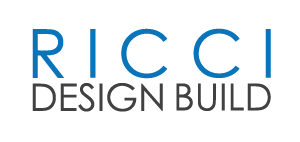The Remodeling Process - Design
May 06, 2016 10:44 AM Filed in: Design
A great renovation project begins with a great design. After all, the more you know about WHAT you want to build, the better you’ll be at HOW to build it.
Unless you have a residential design background, you should engage the services of a professional, who can guide you through this process. Who you hire to help with design depends on the size and scope of your project.
For complex projects, such as a large addition, a designer experienced in new construction is recommended. For medium sized renovations, like a kitchen makeover, consider using a designer who specializes in kitchen and bath design. For small remodeling jobs, such as replacing an existing sink and fixtures, or re-tiling a bathroom, you can work directly with an experienced contractor.
Some contractors, especially those doing high-end custom projects, offer their own in-house design services. (They’ll bring in a licensed architect or structural engineer to assist, only if needed.) The main advantage of using a design-build firm is their ability to deliver projects efficiently and cost-effectively, from design through actual construction.
In all cases, the design process starts with meeting with the designer in your home. They’ll ask lots of questions about you, your family, and how you use your home. They’ll want to fully understand how things work in your current living space, and how you’d like things improved. This is the time to share your dreams and imagination!
The designer will take measurements and photos of the existing space, and ask you about the present function and flow. Then they’ll want know what, ideally, you want to change, and why.
Armed with this knowledge, your designer will put together a design with drawings and renderings. They’ll usually present you with a few design options and choices, depending on your tastes and objectives. They’ll review these options with you, with the goal of perfecting your design.
A good design shouldn’t be rushed, so expect the process to take a month or more. You’ll need time to digest and discuss, and it may require additional meetings with your designer to revise the plans to your liking.
Once you’ve settled on the design, your designer will work on the details of project materials, fixtures and finishes. (This is typically the area that most impacts cost and budget, so choose your finishes wisely.) The resulting specifications will be used by your contractor to build your project.
With your completed design in hand, let the construction begin!
Unless you have a residential design background, you should engage the services of a professional, who can guide you through this process. Who you hire to help with design depends on the size and scope of your project.
For complex projects, such as a large addition, a designer experienced in new construction is recommended. For medium sized renovations, like a kitchen makeover, consider using a designer who specializes in kitchen and bath design. For small remodeling jobs, such as replacing an existing sink and fixtures, or re-tiling a bathroom, you can work directly with an experienced contractor.
Some contractors, especially those doing high-end custom projects, offer their own in-house design services. (They’ll bring in a licensed architect or structural engineer to assist, only if needed.) The main advantage of using a design-build firm is their ability to deliver projects efficiently and cost-effectively, from design through actual construction.
In all cases, the design process starts with meeting with the designer in your home. They’ll ask lots of questions about you, your family, and how you use your home. They’ll want to fully understand how things work in your current living space, and how you’d like things improved. This is the time to share your dreams and imagination!
The designer will take measurements and photos of the existing space, and ask you about the present function and flow. Then they’ll want know what, ideally, you want to change, and why.
Armed with this knowledge, your designer will put together a design with drawings and renderings. They’ll usually present you with a few design options and choices, depending on your tastes and objectives. They’ll review these options with you, with the goal of perfecting your design.
A good design shouldn’t be rushed, so expect the process to take a month or more. You’ll need time to digest and discuss, and it may require additional meetings with your designer to revise the plans to your liking.
Once you’ve settled on the design, your designer will work on the details of project materials, fixtures and finishes. (This is typically the area that most impacts cost and budget, so choose your finishes wisely.) The resulting specifications will be used by your contractor to build your project.
With your completed design in hand, let the construction begin!

